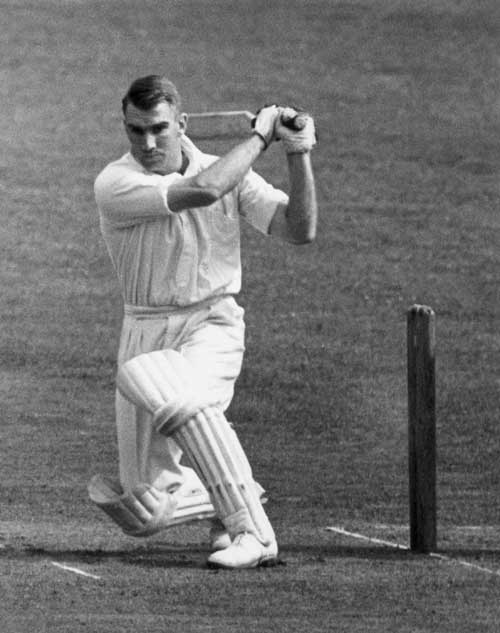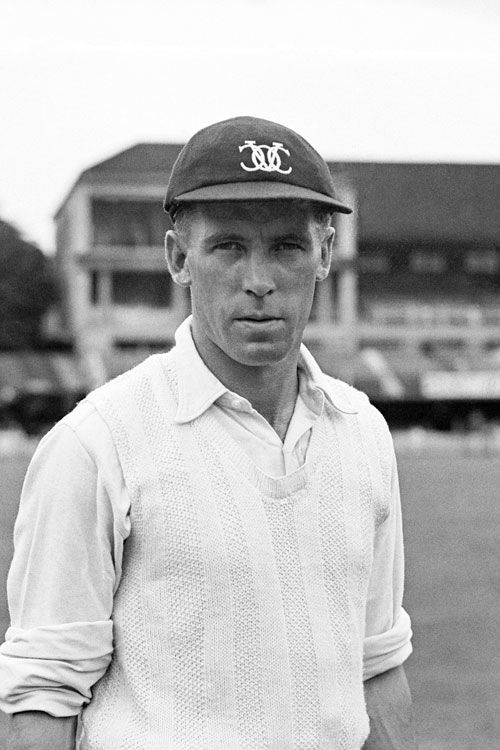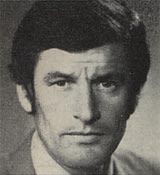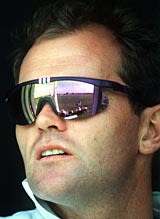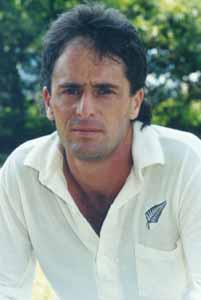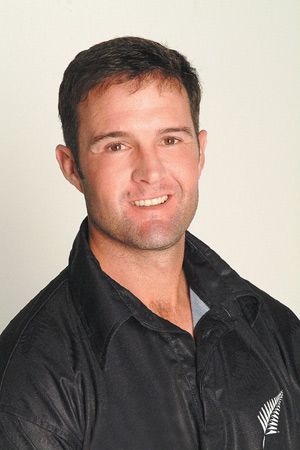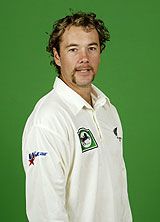John R Reid An allrounders' allrounder, he was a dashing batsman not afraid of hitting in the air, a bowler useful enough to take 466 first-class wickets at 22.6, an exceptional fielder at gully and cover, and good enough to captain the likes of Garry Sobers, Wes Hall, Wally Grout, Eddie Barlow and the Nawab of Pataudi in a World XI. Reid led New Zealand to their first three Test wins.
Bert Sutcliffe "Runs came to him as if by right… I cannot recall him playing an uncouth shot," wrote Reid of Sutcliffe. His
most memorable innings, a "story every New Zealand boy should learn at his mother's knee" came in the middle order.
John F Reid Though fated to be the second-best John Reid in cricket, he averaged the most among New Zealanders who managed more than 1000 Test runs. Calm and orthodox, he scored six hundreds in the eight times he went past 50 in Tests.
Martin Donnelly His cricket a victim of war and the game's financial circumstance, Donnelly played just 13 of his 131 first-class matches at home. The slightly unorthodox thumper to Sutcliffe's artist, he did enough in seven Tests to make the New Zealand Sports Hall of Fame. There is not a New Zealander who doesn't feel a sense of loss that he couldn't play more, and in the country.
Bev Congdon A fine all-round professional, he was a technically correct batsman, a safe fielder, a useful medium-pace bowler, and thrived when captain. Congdon led New Zealand to their first win over Australia, almost beat England for the first time
on his own, and introduced a hard edge to their cricket.
Martin Crowe Had all the shots in the book - and the time to play them. Was labelled the best young batsman in the world when he made his debut at 19, and was one of the best in the world during the following years. Wasim Akram, one of the greatest bowlers of that era, rated him in the same bracket as Sunil Gavaskar and Brian Lara - and higher when it came to playing reverse swing.
Andrew Jones Crowe's sidekick, Jones had to wait until he was 28 for his Test debut, but he didn't let the cap go once it came his away. Not one for purists, he had a technique of his own, but his determination and ruthlessness stood out - as an average of 44.27 over 39 Tests testifies.
Stephen Fleming New Zealand's leading run-getter, most successful captain, and their most capped player. Numbers could say only so much about Fleming, though. His graceful batting brought joy, and also the feeling that he undershot as a batsman.
Nathan Astle His free spirit at times proved his downfall. An automatic selection if this were an ODI team, on his day he was as destructive a batsman as any. Astle holds the record for the fastest double-century in Tests.
Craig McMillan Abrasiveness, aggressiveness, improvisation and a relish for the difficult situation were McMillan's key features, suggesting there was more than his resemblance with Russell Crowe to his being nicknamed The Gladiator.
We'll be publishing an all-time New Zealand XI based on readers' votes to go with our jury's XI. To vote for your top New Zealand middle-order batsmen click here 
